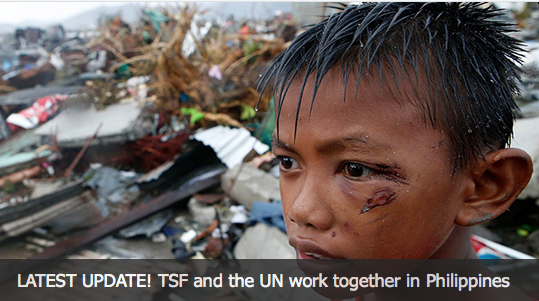
[SatNews] Most would flee to escape its ravages, but this NGO knew the potential dangers, and nevertheless arrived in anticipation of its brutality...to help with what happens... after.
They came from Bankok as a team to Visayas and Leyte in the Philippines. Arriving on November 7 in anticipation of the typhoon that hit on November 8. Télécoms Sans Frontière’s team were well versed about Typhoon Haiyan (locally known as Yolanda)— a Category 5 typhoon with wind speeds of up to 300 km/h. It was the strongest tropical cyclone to make landfall in recorded history. Adding insult to injury, the typhoon further destroyed areas of the Philippines which have already been weakened by the two typhoons and the earthquake that the country has suffered in the past month. Roads and infrastructures are left damaged and there is a high risk of further significant landslides.
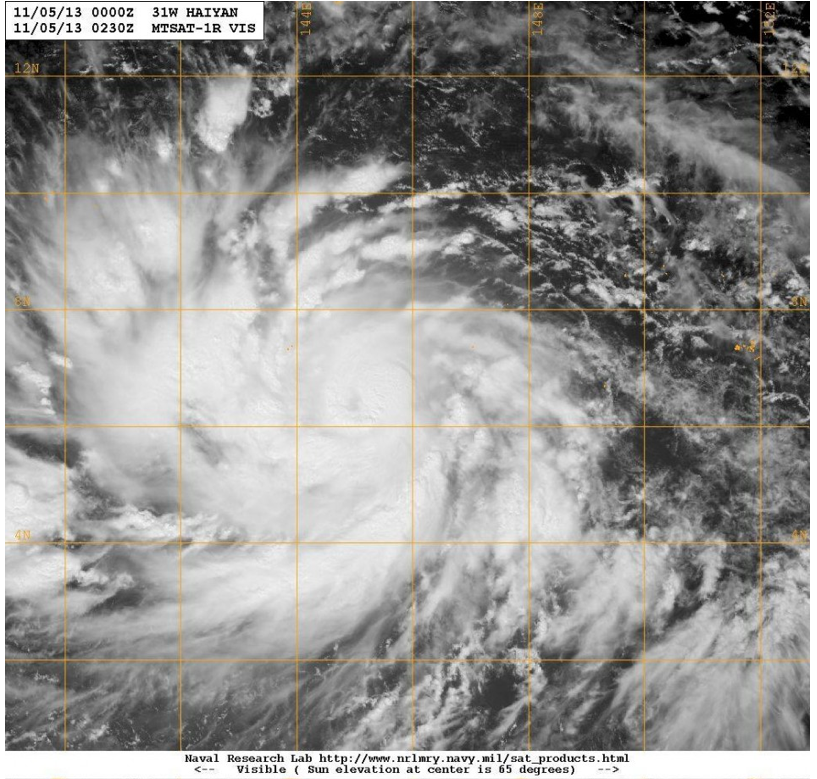
The impact of Haiyan has been compared to that of the category 5 Typhoon Mike which hit the Philippines in 1990 causing over 500 deaths and destroying almost 250,000 homes.
The disaster called for great humanitarian aid due to the 4.1 million people it could potentially affect in the areas of Visayas and Leyte. It is for this reason that Télécoms Sans Frontières’ Bangkok based team, as well as backup from its international headquarters in Europe, made way for the Philippines a day before the typhoon struck.
Télécoms Sans Frontières is able to provide the immediate, essential support to the hundreds of thousands of people affected as well as the numerous humanitarian aid agencies in the field. The reinforcements sent from TSF’s international HQ mean that the hundreds and thousands of affected people will be able to make calls to their families to inform them of their situation, in many cases reassuring them that they are still alive. Thanks to its partnership with UNDAC (United Nations Disaster Assessment and Coordination) TSF is one of the first NGO responders on the ground, allowing for telecoms assessments to be carried out as well as the immediate installation of telecoms centres to generate a coordination hub for the other NGOs in the disaster zone.
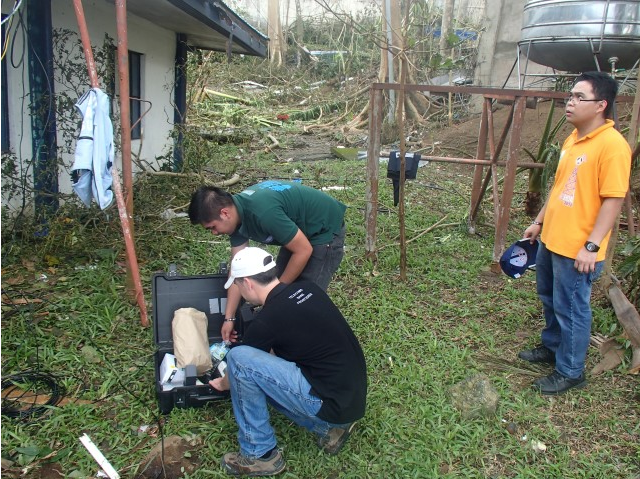
Being amongst the first on the ground after Haiyan struck, this allowed TSF to pre-position three telecom centers for relief coordination before the influx of humanitarian aid arrived in the aftermath.
The town of Tacloban has been identified at the most affected area, with head of UNDAC, Sebastian Rhodes Stampa, describing the area as having suffered “destruction on a massive scale”.
TSF has already installed three functioning satellite connections which provide Internet to the telecom centers put in place—the first, to the benefit of the Filipino NDRRMC (National Disaster Risk Reduction and Management Council) as well as the Ministry of Telecommunication, the second, used by the United Nations agencies of OCHA, WFP and UNDAC and the third for all the other humanitarian organizations present in the area.
The death toll is mounting in the Philippines after Typhoon Haiyan tore across the country on Friday. Among the worst hit areas is eastern Leyte island and the city of Tacloban where the devastation resembles the aftermath of a tsunami.
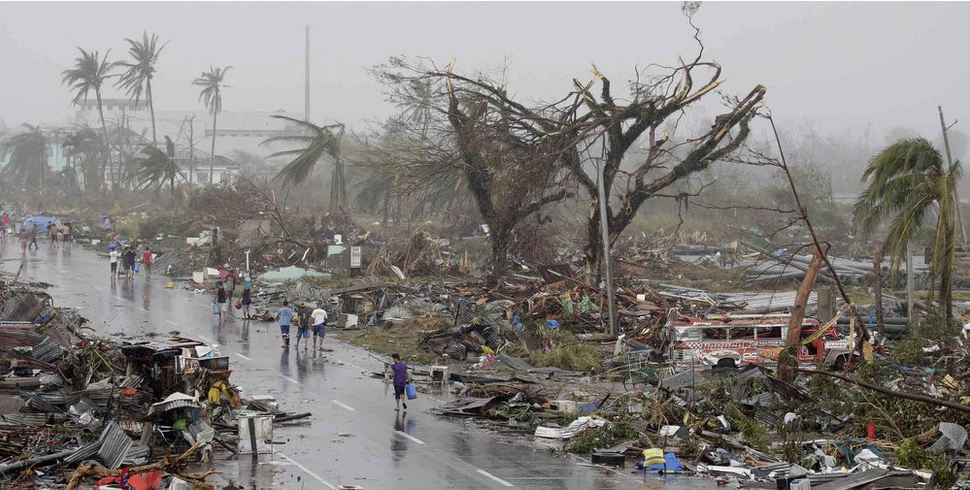
As many as 10,000 people may have died in Tacloban alone, with hundreds more feared dead in the rest of Leyte and on neighbouring Samar island. Many survivors have no clean water, electricity or food.
With more than 10 TSF’s centers are essential to any humanitarian operation. They provide all NGOs with a management hub from which they can send and receive essential information concerning their operations, meaning they can work as efficiently as possible and coordinate their actions amongst the millions of people affected by Haiyan.
Working in collaboration with local telephone operator, SMART, TSF has carried out assessments of the telecom situation and it is estimated that it could take up to two months or more before the telecommunications networks are restored.

As of November 11...
Security conditions across the Philippines are rapidly deteriorating. The critical need for food and water has lead desperate inhabitants to pillage supplies from shops and supermarkets, notably in the town of Tacloban, the most affected by Haiyan.
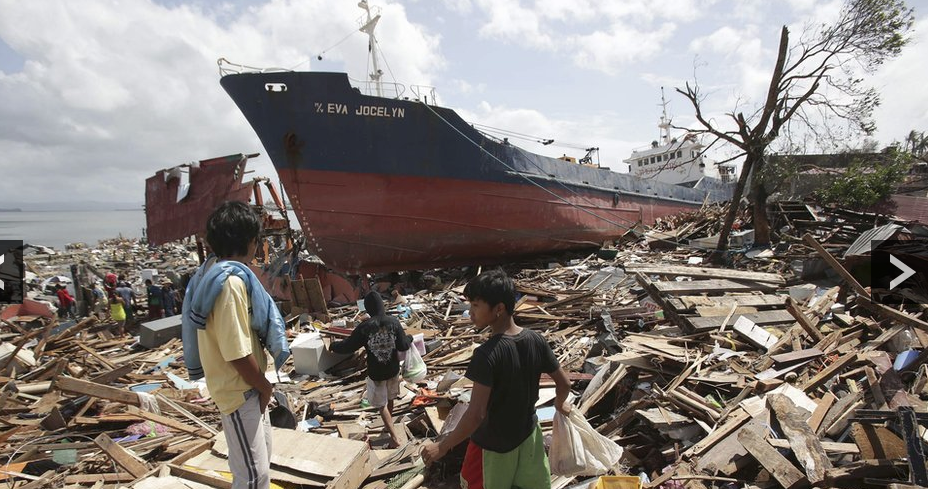
The death toll is mounting in the Philippines after Typhoon Haiyan tore across the country on Friday. Among the worst hit areas is eastern Leyte island and the city of Tacloban where the devastation resembles the aftermath of a tsunami.
Télécoms Sans Frontières has provided the Minister and Deputy Minister for Home Affairs and National Security with satellite telephones in order to improve communication capacities within the Filipino government services and beyond.
The Department of Health has placed an official request for TSF to put into place a satellite connection within Tacloban General Hospital. The need for medical care is rife. TSF’s satellite connection will allow for hospital workers to collaborate with medical teams on a national scale and provide well-coordinated health support to the thousands of victims seriously injured by the typhoon.
Télécoms Sans Frontières is pursuing its support to the United Nations agencies of OCHA and UNDAC by providing satellite Internet connections and continuing to carry out telecoms assessments.
Two separate teams have deployed to the islands of Busuanga and Panai to provide both technical and material support to the UN, supplying satellite equipment and telephones for assessments which are being carried out in hospitals and military bases used as improvised evacuation centers.
Local operators, SMART and Globe Telecom have managed to partially restore GSM coverage in some areas of Tacloban. Pending the full operational service of the mobile network, TSF alongside SMART will continue to carry out humanitarian calling operations allowing the thousands of people cut off from the rest of the world to get in contact with their families in other areas of the Philippines and overseas to let them know that they are still alive.

